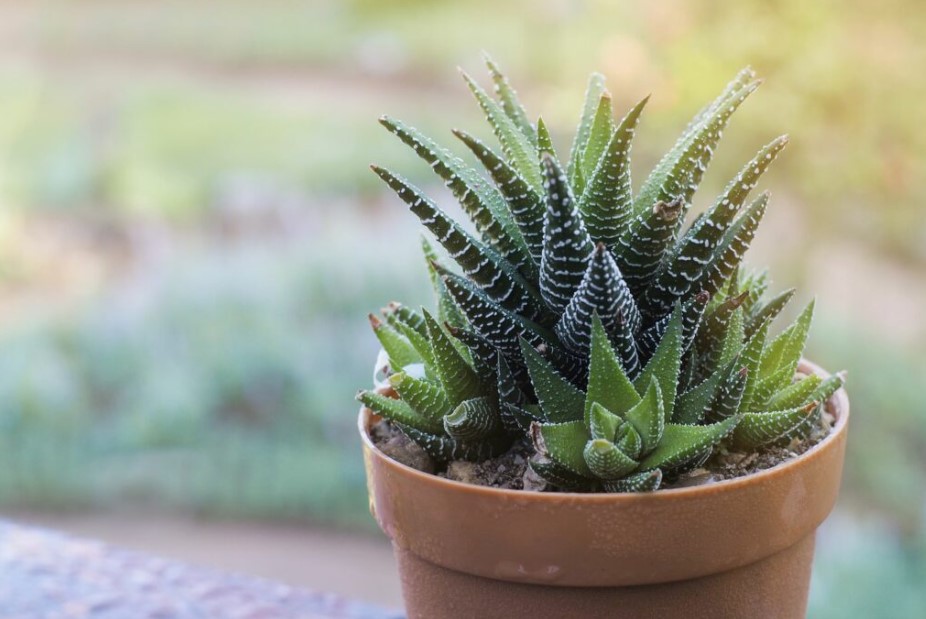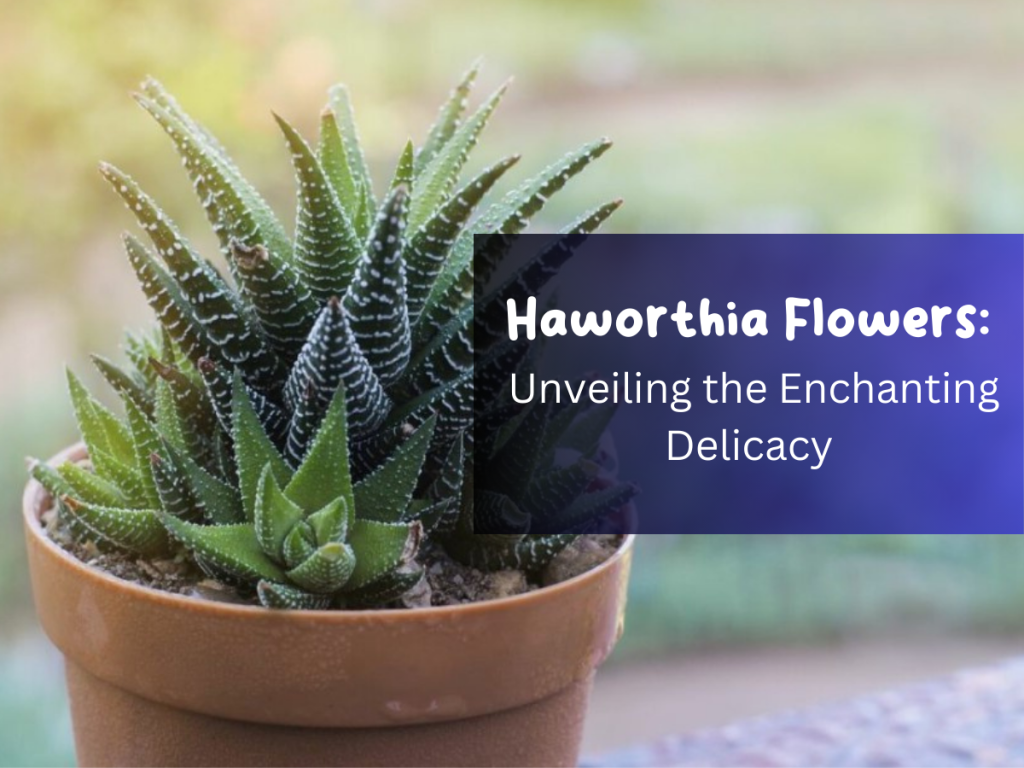Haworthia, a delightful succulent plant with captivating rosette-shaped leaves, has been a favorite among gardening enthusiasts for decades. Native to the arid regions of Southern Africa, this unique plant belongs to the Asphodelaceae family and is known for its resilience and stunning aesthetic appeal. In this comprehensive guide, we will explore the fascinating world of Haworthia flowers, uncovering their characteristics, care requirements, and the joy they bring to any indoor or outdoor garden.
Understanding Haworthia Flowers
The Beauty Within:
- Haworthia flowers are small and delicate and come in many stunning colors, including white, pink, and green.
- These flowers emerge on long stalks, gracefully rising above the plant’s rosette of fleshy leaves.
- While the flowers may appear modest in size, their intricate patterns and textures make them genuinely mesmerizing.
Species and Varieties:
- The Haworthia genus encompasses numerous species, each exhibiting unique characteristics.
- Some popular varieties include Haworthia cooperi, Haworthia fasciata, and Haworthia attenuata, among others.
- Each species and variety offers distinct leaf shapes, colors, and flower arrangements, providing endless possibilities for plant enthusiasts.

Cultivating Haworthia Flowers
Optimal Growing Conditions:
- Haworthias thrive in bright, indirect light, making them suitable for indoor and outdoor cultivation.
- These succulents prefer temperatures between 65-80°F (18-27°C) but can withstand slight variations.
- A well-draining soil mixture designed explicitly for succulents and occasional fertilization ensures healthy growth.
Watering and Care:
- Haworthias have adapted to arid environments, and therefore, they prefer infrequent watering.
- Allow the soil to dry out completely before watering, as overwatering can lead to root rot.
- Water sparingly during the growing season, spring to fall, but be cautious not to let the plant become entirely dehydrated.
Propagation:
- Haworthias can be propagated through various methods, including leaf cuttings, offsets, and seed propagation.
- Leaf cuttings involve removing healthy leaves and allowing them to callus before planting them in well-draining soil.
- Offsets, which are small plantlets that grow alongside the mother plant, can be carefully separated and replanted.
Showcasing Haworthia Flowers
Indoor Displays:
- Haworthias make excellent indoor plants, adding a touch of elegance to any space.
- Display them in small decorative pots, terrariums, or dish gardens, and allow their vibrant flowers to become the focal point.
- Due to their compact size, they can be placed on windowsills, desks, or shelves, brightening up any room.
Outdoor Gardens:
- Haworthias can be grown outdoors in mild climates or during the summer months.
- Plant them in rock gardens, succulent beds, or as accents in mixed plantings to create a visually appealing landscape.
- Consider grouping different varieties to showcase the diversity of colors and leaf patterns.

Conclusion:
Haworthia flowers embody nature’s artistry, showcasing their beauty through intricate patterns and delicate colors. Their resilience and ease of care make them an excellent choice for novice and experienced gardeners. Whether displayed indoors or outdoors, these beautiful succulents will captivate anyone who appreciates the wonders of nature. The Haworthia flower will reward you with years of joy and admiration with proper cultivation and attention. So why wait? Start your journey into the captivating world of Haworthia flowers today! Read article about Cuddly Cactus and How to Make Spider Plant Bushier in Avi Hoffman Garden.
FAQ Haworthia Flowers
When a Haworthia blooms, it is a sign that the plant has reached maturity and is ready to reproduce. Blooming is a natural process where the plant produces flowers to attract pollinators, such as bees or moths. It indicates that Haworthia is healthy and thriving in its environment.
Haworthia flowers may be small, but they possess a unique beauty that can enhance various aspects of your gardening experience. Here are a few things you can do with Haworthia flowers:
Enjoy their aesthetic appeal: Haworthia flowers come in different colors and patterns, adding a touch of charm to your indoor or outdoor garden. Admire their delicate blooms and unique textures.
Create floral arrangements: Harvest the blooming flowers and incorporate them into miniature floral arrangements. Their petite size makes them perfect for terrariums, succulent wreaths, or small vases.
Study the plant’s reproductive process: Observing Haworthia flowers can provide insights into the reproductive cycle of these succulents. Witnessing the formation of seeds and the subsequent growth of new plants can be a fascinating educational experience.
Haworthias typically bloom once a year during their active growing season, usually in the spring or summer. However, the blooming frequency can vary depending on the species, environmental conditions, and care provided to the plant. Some species may bloom more frequently, while others may bloom less often or irregularly.
Yes, Haworthia zebra plants (Haworthia fasciata or Haworthiopsis attenuata) are known to produce flowers. Although they are primarily admired for their striking zebra-like patterns on their leaves, they can surprise you with their beautiful blooms. The flowers of Haworthia zebra plants are typically tubular and appear on long, slender stalks. The colors can vary, but they are commonly white or pale pink. When properly cared for, a healthy Haworthia zebra plant may produce flowers during its blooming season, adding an extra visual delight to this already eye-catching succulent.







